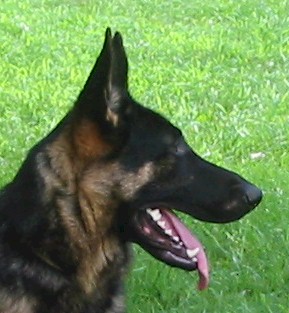Obedience Training
The first step in training a dog is obedience. Any dog, regardless of
shape, size, or age can be trained for obedience. This is the core
of all dog training. Without good basic obedience, a dog cannot receive
any meaningful advanced training. The long term benefits of a well
trained dog will be seen and appreciated by their owner on a daily
basis.
Obedience training
opens clear channels of communication between you and your dog.
Obedience is the tool we use to teach our dog house manners and other
socially acceptable behaviors. Obedience is used to control your dog in
every day life and also during times of excitement or anxiety.
Obedience teaches your dog to respect you as the leader and a trusted
friend. Obedience teaches your dog useful commands that allow your dog
more freedom and safety.
Dogs are working
animals and enjoy work as long as it is enforced in a positive way. It
is not enough for a dog to just know a few commands. You want to make
obedience a way of life for your dog. Work should take up most of a
dog’s day. You must keep their minds busy. This should include daily
rules and guidelines. What happens at home on a daily basis greatly
out-weighs everything else, so it is very important for the owner to
become an
expert on their own dog.
Owners need to learn how to read their dogs and anticipate their next
move. This is a crucial element in dog training. They also need to learn proper usage of
equipment, how to correct properly and how to reward with lasting
results. Your dog should obey commands like heel,
turn, sit, down, stay, come, etc. Obedience training will also
help stop bad habits.
A dog is never too
old or to young to start with obedience training. Here at Sequoyah
Shepherds, we train with
Service Dogs of America (SDA). There are
many good trainers and training clubs out there, though. BUT, Do your
research! Choose a trainer or club that will meet the needs of
both you and your dog. Make sure that your trainer can adapt their
training to each individual dog because, like people, each dog has their
own personality and must be trained as such.
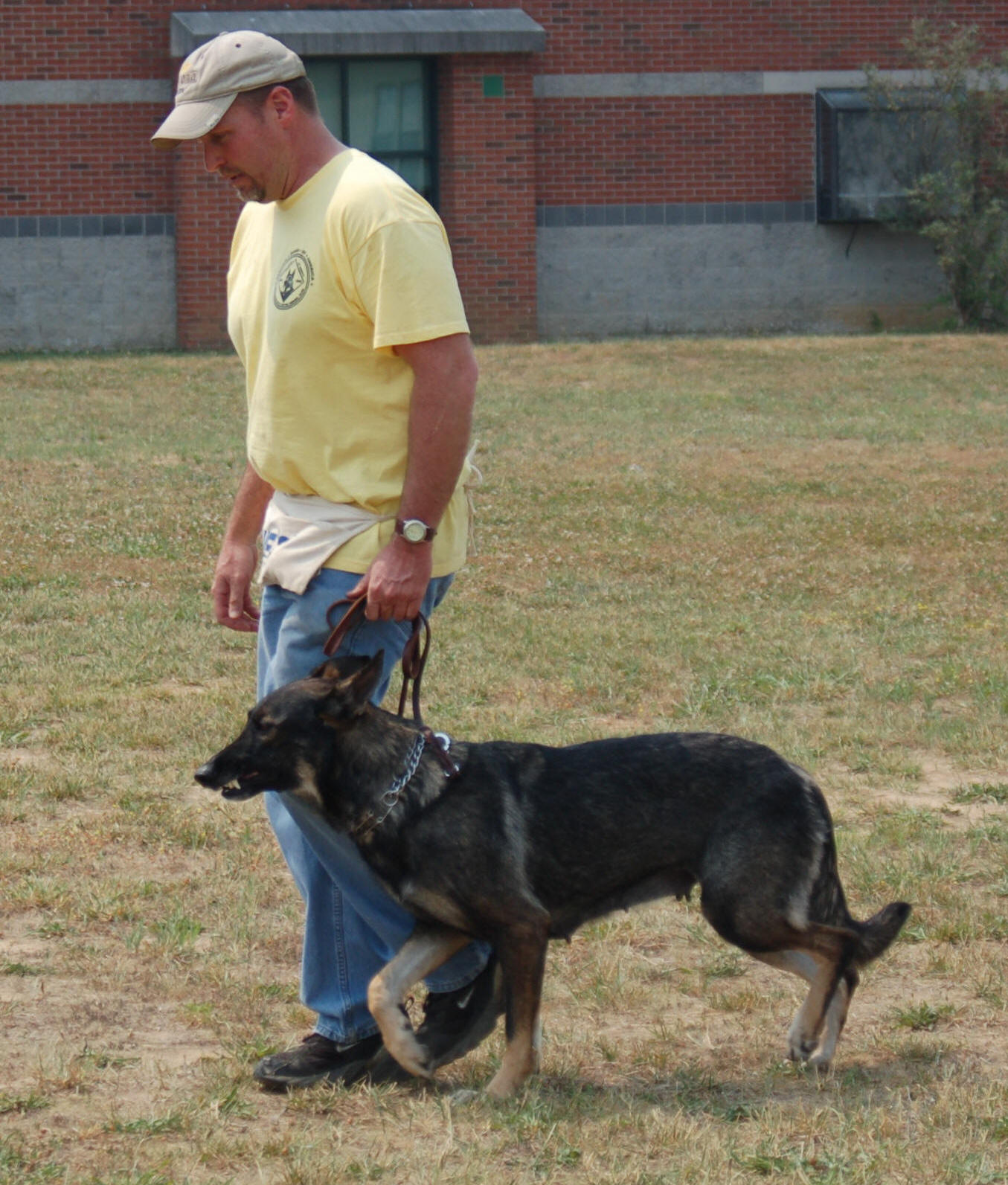 The
Dog must heel when told to heel, usually keeping to
the left of his handler.
The
Dog must heel when told to heel, usually keeping to
the left of his handler.
 The
dog must sit when told to sit!
The
dog must sit when told to sit!
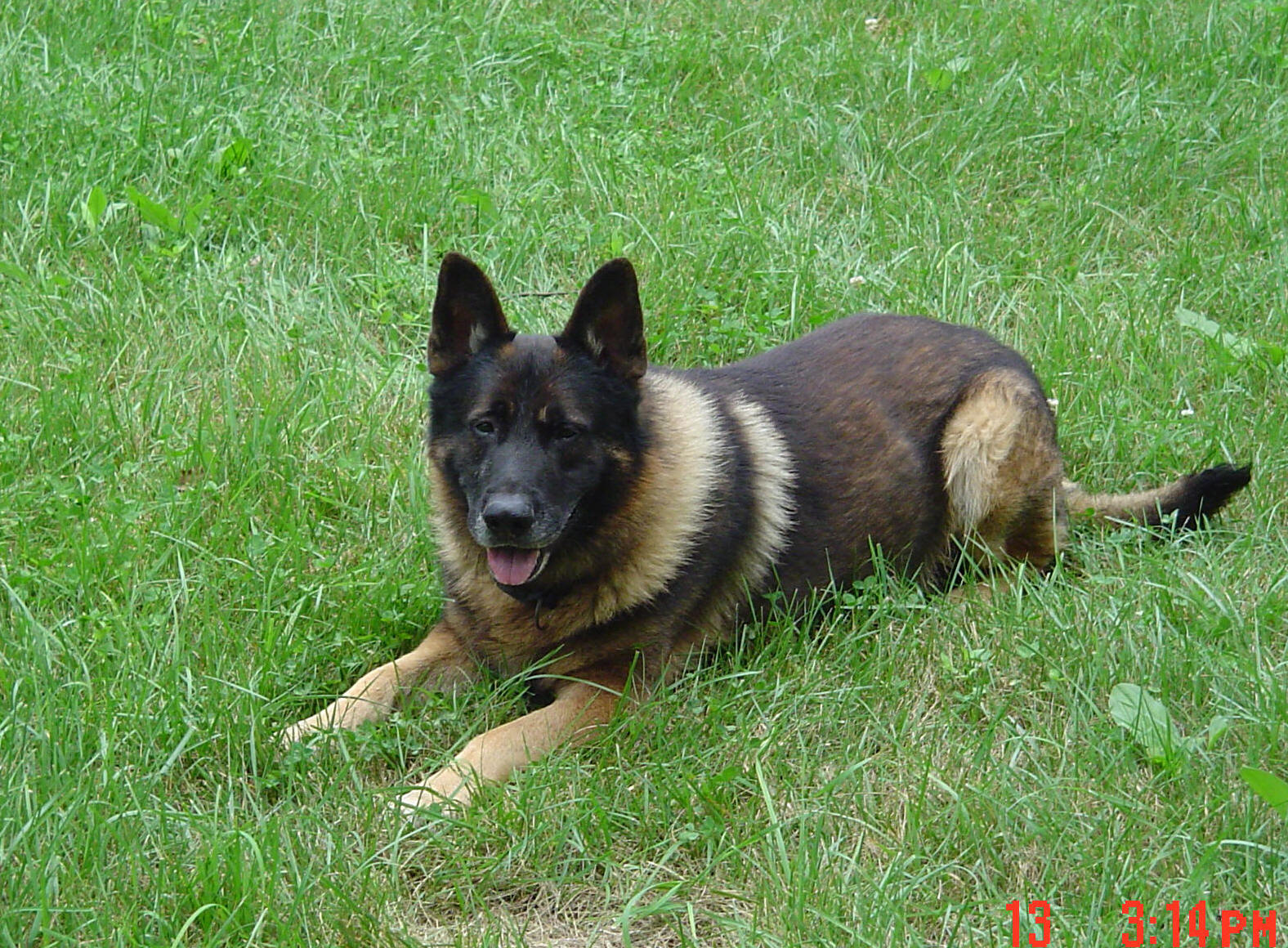 The dog
must down when told to down!
The dog
must down when told to down!
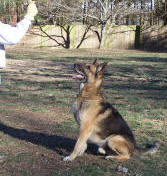 The
dog must stay when told to stay! Once he has been
told to stay, he is not allowed to move
from his spot.
The
dog must stay when told to stay! Once he has been
told to stay, he is not allowed to move
from his spot.
 The
dog must come when told to come!
The
dog must come when told to come!
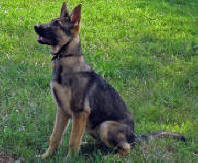 The
dog must not respond to any command coming from any
other person.
The
dog must not respond to any command coming from any
other person.
 Voice
commands can be done in any language. Besides voice
commands, your dog will often also learn the nuances
of your body language!
Voice
commands can be done in any language. Besides voice
commands, your dog will often also learn the nuances
of your body language!
